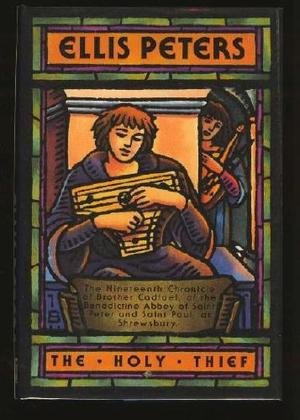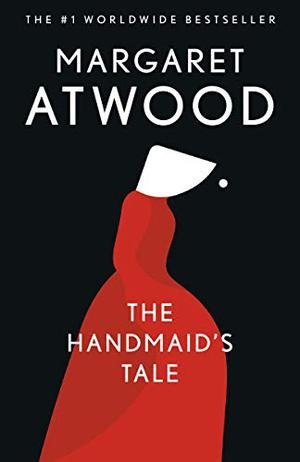What are your goals in posting on the Cedar Park Book Blog? I select and then discuss books that I hope my blog-followers will enjoy reading. I also want to draw attention to the activities of Cedar Park Press, which hosts the Cedar Park Book Blog. Plus, I find it helpful to my own future reading choices if I analyze a book once I reach the final page!
What genres do you review? I review literary fiction, plus some social history and biography. Within literary fiction, I gravitate toward historical fiction and mysteries, but I review quite a few novels set in the present day, including some fiction in the subgenre known (unfortunately, I think) as chick lit. I avoid science fiction, fantasy, horror, thrillers, and graphic novels, so I don’t even crack open a great many of the books being published.
Why do you avoid reading and reviewing certain genres? I find it amazing that today’s reading public eats up fiction that contains so many gruesome or violent scenes. When this fiction is well written, it can be so realistically scary that it gives me nightmares! Is this public taste for the grisly, the macabre, and the shocking a way for people to feel better about the difficult world we live in? In other words, does reading about a fictional world that is much worse than the actual world make the readers feel better somehow? I prefer books that treat the human predicament more subtly. I also admit that I’m a sucker for happy endings.
What about dystopian fiction? Dystopian fiction can be part of the landscape of horror, as Jill Lepore wrote in an insightful piece for The New Yorker in 2017. I did venture to review the dystopian novel The Mandibles by Lionel Shriver, though I found it creepy at times. I don’t plan to pick up more books like that one.
Why do you review so many British and American books? British and American publications are the ones most available to me, but in the blog mix you’ll find a fair number of novels by authors from other countries. In the Archive in the right-hand column, you can click on “Irish Novels,” “Australian Novels,” and “International Novels.” The “International Novels” section includes fiction written in English (like Stay with Me from Nigeria) and fiction translated into English (like Ties from Italy and A Man Called Ove from Sweden).
Do you review only books that were written recently? I do focus primarily on books that have come out in the past few years. Sometimes, however, I’ll review a classic (like Pat Conroy’s 1986 The Prince of Tides) or a series of books that has continued to the present (like Alexander McCall Smith’s novels about Isabel Dalhousie). I’ve also reached back into the 1990s for reviews of some series of mystery novels that I’ve enjoyed (like Margaret Frazer’s series starring Dame Frevisse).
How do you decide if you’ll review a series of books? If I find a book in a series that I particularly like, I may binge-read the entire series and then review it as a whole. More often, though, I’ve been following a series for a decade or more, and my review on the Cedar Park Book Blog is triggered by the publication of a new entry in the series. For example, I reviewed the Maisie Dobbs mystery series by Jacqueline Winspear when the latest title, In This Grave Hour, came out in 2017. I found this book the weakest of the series, but I recommended the series as a whole very highly.
Why do I see so many reviews of medieval mysteries on the blog? This sub-genre is a special interest of mine, partially because of my academic background in medieval studies, so I’ve re-read some of my favorite titles from a decade or so ago and offered recommendations. I’ve also reviewed a good mystery series set in Tudor England, by CJ Sansom.
Within the genres that you review, how do you choose specific books? I scan the New York Times and my local library’s lists of new books for titles. I read book blurbs, those brief summaries of plot put out by Publishers’ Weekly or Goodreads.com, to help me find suitable reads. I put off reading full reviews of a book until I’ve reviewed the book myself, so that I’m not swayed by the opinions of others. I’m surprised at how many reviews by others are positive. Often (often!) I’ve found a title execrable only to discover that many reviewers at places like the New York Times and the Guardian praised it to the heavens. Ben Yagoda echoed my thoughts in a good article for Slate.com called “The Reviewer’s Fallacy: When Critics Aren’t Critical Enough.” You can rest assured that I’m not receiving kickbacks from publishers or pressure from superiors to praise a book that’s poorly written!
Do you post a review for every book that you read? I post a review for every book that I finish reading. Every week I haul home from the library six to ten books from my chosen genres. One by one, I stack them into the pile to go back to the library, most rejected after a few pages or a couple of chapters.
What would make you abandon reading a book? Oh, disgust will do it. For example, I recently started to read Tom Perrotta’s 2017 bestseller, Mrs. Fletcher. Right away, there were sex scenes. I usually like the sex scenes in novels, and I review a lot of fiction with erotic components. But the exploitative sex in Mrs. Fletcher repulsed me so much that I gave up on this book. Scenes of extreme violence work the same way. And I’ll sometimes abandon a novel because the narrative line is murky, as in Jon McGregor's Reservoir 13. Even if a book has great lyricism, I still want to be carried along by a solid plot, with well-developed characters. I fully understand that there are schools within modern fiction where traditional plotting is disdained. Sorry, friends, but humans have loved plots for thousands of years. I have stories in my life, and I like to relate to the stories in the lives of others.
Why don’t you use a “star” system for rating titles? I find it deceptive to collapse assessments of plot, characters, descriptions, imagery, historical accuracy, and other aspects of a book into one rating. I addition, I think that star ratings tend to be inflated, that reviewers hedge by granting mediocre books three stars out of five. Instead of this system, I aim for nuanced and candid reviews, to help you decide if you’d want to read the book yourself. If I give a title a full review on the Cedar Park Book Blog, you can be assured that I found the book worth reading. If the book rises into my “favorites” category, I’ll tell you that in my post. If the book is worth reading but I have some caveats, I’ll tell you that, too. For example, check out the caveats in my review of Zadie Smith’s Swing Time.
What are you doing to celebrate the one-year anniversary of the Cedar Park Book Blog? I’m reading more books! And I leave you with a wise sentence from Claudia Roth Pierpont, applicable to both writers and readers: “Words ordered on a page may supply some order for one’s life, may assuage and even redeem tragedy.” (The New Yorker, March 6, 2017)
Cedar Park Press is pleased to announce the publication of Adventures of a Girl Architect by Hazel Harzinger. Click here to purchase this title in digital or paperback format.
















